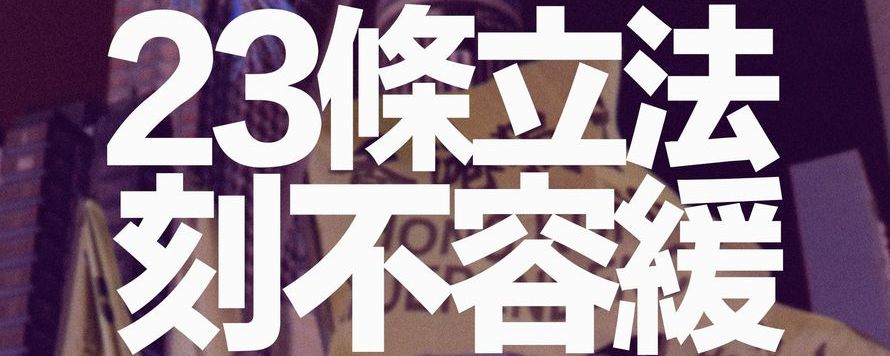打造屯門成為環保功能城市
2013-06-27 16:10:46
1. 事緣
香港政府一直以來的廢物處置方式並不理想,加上沒有大力宣傳減廢訊息,致使香港每日都市固體廢物人均棄置量比其他先進城市為高,達到1.27公斤。[1]在沒有減廢措施下,政府只能用不得人心的擴建堆填政策,將問題一直推延,並不能達到長遠發展。所以,本文希望能推動社區的新思維,參考北歐先進城市的模式,打造屯門為新一代的環保功能城市。
2. 問題重心
現時新界西堆填區每天處理香港接近5成的垃圾[2],這些垃圾,可以化腐朽為神奇,成為有用的資源。籍著這個機遇將環保科技產業化。除了回收重用舊垃圾外,廢物還可以改變成為能源及資源,而屯門有潛力成為香港先進的廢物處理橋頭堡。
3. 配套設施
政府應採取主動,在屯門建造垃圾處理基地,主要負責以下三個範疇:
1) 循環再造;
2) 製造能源;
3) 採掘堆填區舊垃圾重用。
政府及相關部門亦應同步發展機械、人才、科技及交通等配套。政府使用大量公帑去擴建堆填區,將垃圾放置於珍貴的土地上,成本固之然高昂,但如能投資環保科技,便可使其孵化及成熟。如政府能將同等金錢及資源投資於人才及科技方面,學習北歐等國,如瑞典及挪威,又可參考台灣等地的垃圾分類方法。這類地方發展焚化及轉化能源技術已久,現今反而不夠垃圾燃燒,要從其他歐洲國家入口垃圾。
香港亦應以此為學習對象,他日處理垃圾的模式,將會是全國甚至南亞地區的典範。中國未來的消費市場愈趨成熟,同時也造成垃圾量的增加,在政府大力推動下,香港的環保技術可以外銷中國,更有可能成為長遠產業。
4. 香港及屯門優勢
「學無先後,達者為先」。香港只要有明確的方針,勇氣去接受挑戰,必定可以充份發揮潛能,發展先進的環保概念。香港應該善用本身的優勢條件和當下的機遇,包括:
1) 學術:香港有8間頂尖大學,能夠培訓足夠環保人才;
2) 資金:政府有充裕財政儲備可以推動有關環保政策。單在教育方面,政府每年已投放600億的教育資金,從中撥備部份來加強人才專業培訓,是絕對可行;
3) 勞動力:環保業吸收低技術勞工,而屯門人口集中,有48萬人士可提供大量勞動力,亦可以為本區締造就業機會;
4) 迫切性:社會有廣泛共識,有急切需要解決垃圾問題。
5) 交通便利:屯門水陸兩通,加上未來珠港澳大橋等基建,方便物流來往;
6) 基建設施:屯門已設有焚化爐、AB兩個青山發電廠、堆填區等,如能妥善運用,可以在不增加太多厭惡性設施下,改變有關功能。
5. 推廣
雖然屯門有潛力成為環保功能城市,但政府必需做好整體計劃研究,強調有關政策的好處,以增取屯門區居民支持。
新界關注大聯盟

TRANSFORMING TUEN MUN INTO AN ENVIRONMENTALLY-FRIENDLY CITY
1. Background:
The Hong Kong Government has, to this day, failed to develop an effective and sustainable waste management solution. Coupled with the lack of promotion for waste reduction, it has led to a production of 1.27kg municipal solid waste per person per day in Hong Kong – which is a figure higher than that of any other developed city.[1] Without an effective waste reduction policy, the Government continues to delay in properly addressing the issue through short-term (and unpopular) measures such as expanding existing landfills, which are not sustainable for future development. Therefore, it is hoped that this paper will stimulate new ideas for waste management within the community by looking at some examples in Northern Europe, and will help to transform Tuen Mun into an ecologically-sustainable and environmentally-friendly city.
2. Core Issues:
Currently, the West New Territories Landfill absorbs almost half of Hong Kong’s daily production of waste.[2] Fortunately, these waste products may be converted into valuable resources, which could be a great opportunity for the commercialization of the recycling industry. Waste matters can be collected and recycled, and possibly even transformed into energy and resources, and Tuen Mun could very well become the pioneer of a waste management industry in Hong Kong.
3. Facilities:
The Government should be proactive in this matter and build a waste treatment plant in Tuen Mun. The plant should have the follow basic functions:
1) Recycling;
2) Generating renewable energy; and
3) Extracting wastes from exiting landfills and transforming them into resources.
The Hong Kong Government and its relevant departments should also develop machinery, human capital, technology and infrastructure such as transportation systems to compliment such a scheme. The Government expends enormous amounts of public money and resources in the expansion of existing landfills. This strategy of storing rubbish in valuable land-space in Hong Kong is both costly and wasteful. However, investment into recycling technology would be beneficial for the community. Existing public resources could be much better utilized if it were used for investment on human capital or in technological developments – a policy adopted by many Northern European countries, such as Sweden and Norway. Hong Kong could also learn from the Taiwanese Government and separate the various types of waste. These countries have long managed waste through incineration, where the energy by-product is harnessed and converted to a useful resource. Ironically, these countries are running out of wastes and are now importing rubbish from other countries to fuel their incinerators.
By learning from these countries, Hong Kong could very well become a role model for waste management in China or even Asia. Especially as the production of waste in China is growing exponentially due to the growth in the consumer’s market, Hong Kong could export this recycling technology to the mainland, and such environmental technology could well become a very profitable and sustainable industry.
5. Promotion:
Although Tuen Mun has the potential to become an environmentally-friendly city, the Government should still conduct a comprehensive research project, which emphasizes the benefits of the project, in order to obtain the support of the Tuen Mun residents.

[1] 環境局 (2013), 香港資源循環藍圖2013﹣2022, P.2
[2] According to the Environment Protection Department, the West New Territories Landfill takes in approximately 6,131 tons of waste per day, which is about 45.6% of the total daily production.

